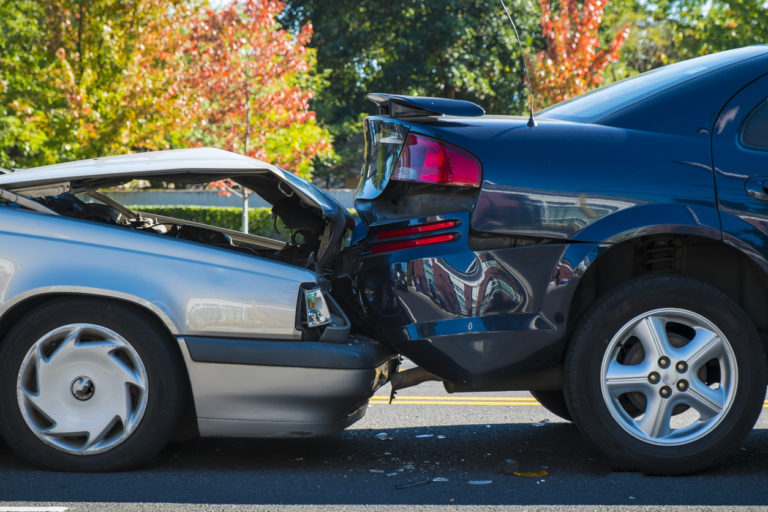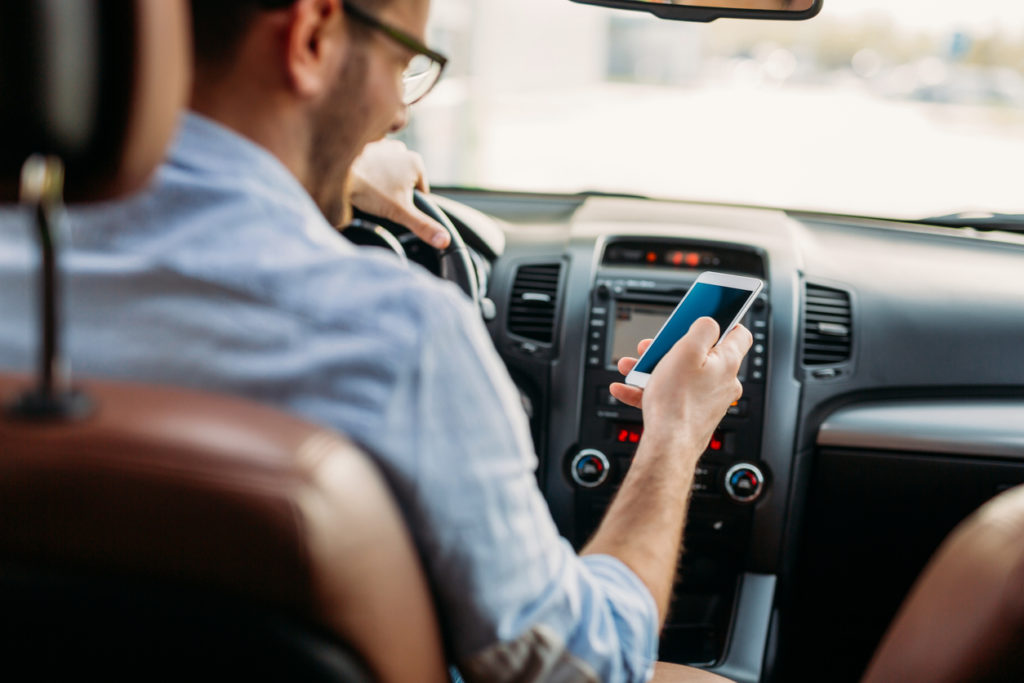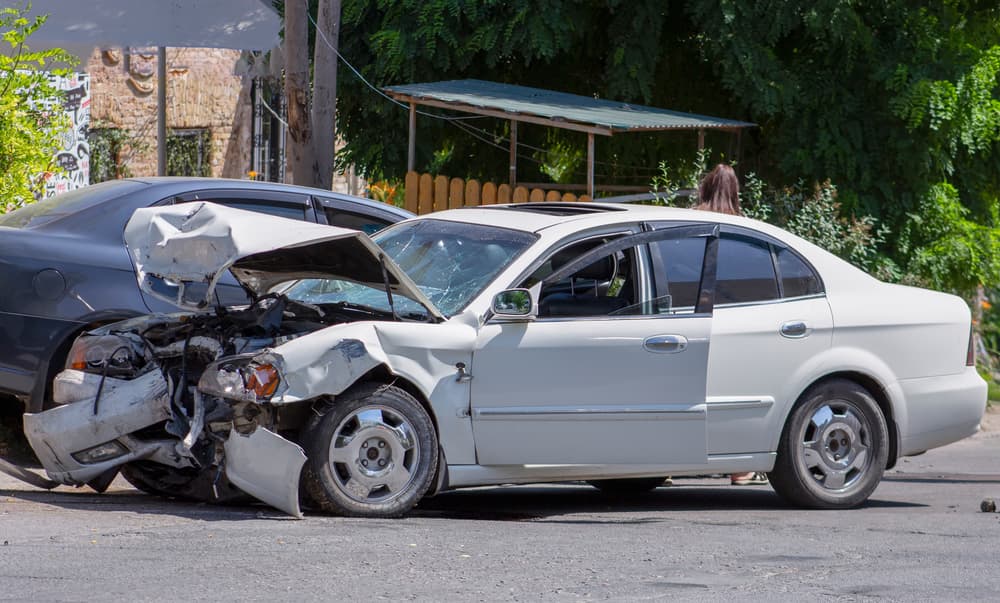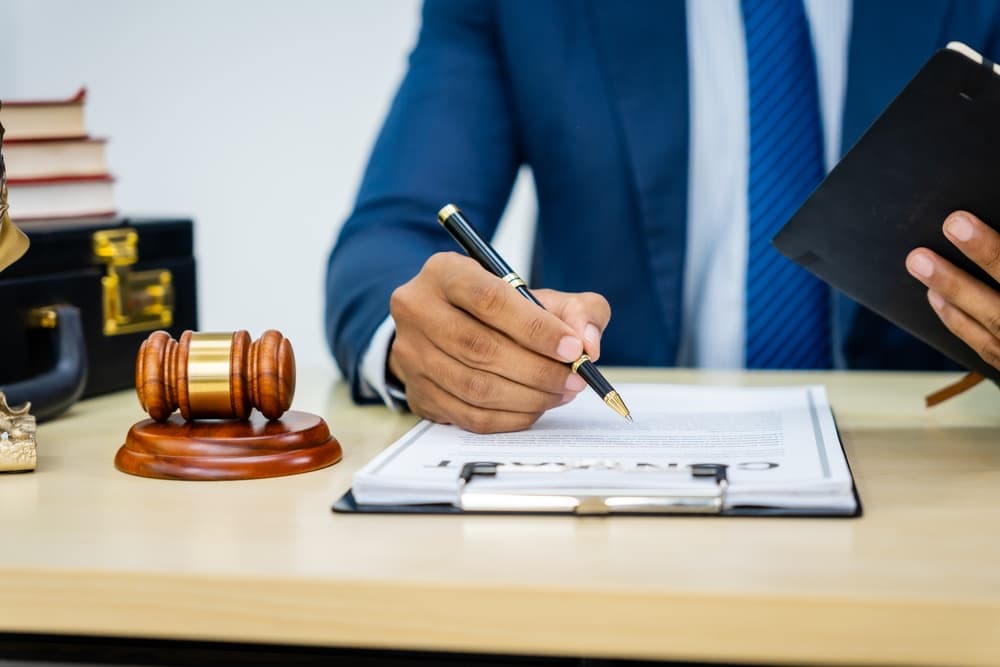Stephen Hasner | Car Accidents | March 23, 2023

Traffic fatalities in the United States reached 40,990 in 2023, representing a slight decrease from the previous year but still highlighting the deadly consequences of preventable driving behaviors, according to the National Highway Traffic Safety Administration. Whether you’re navigating Atlanta’s congested I-285 or exploring Savannah’s historic streets, understanding the common causes of car accidents can help you recognize when another driver’s negligence is to blame. When crashes stem from preventable mistakes, a skilled car accident attorney can advocate on your behalf, pursuing fair compensation while you focus on healing.
With over 80 years of combined experience, Hasner Law has represented thousands of accident victims throughout Georgia and recovered more than $1 billion in verdicts and settlements. We understand how these common accident causes create liability and what evidence proves negligence in court.
If you’ve been injured in a car accident caused by another driver’s mistakes, call us at 678-888-HURT (4878) in Atlanta or (912) 234-2334 in Savannah for your free consultation.
1. Distracted Driving: The Leading Cause of Modern Accidents

Distracted driving has become the primary cause of car accidents across Georgia, with drivers taking their attention away from the road for an average of five seconds when texting. At highway speeds, this represents traveling the length of a football field while blindfolded, creating dangerous conditions for everyone sharing the road.
Cell phone use while driving creates three types of distraction: visual distraction when drivers look at their phones, manual distraction when they manipulate devices, and cognitive distraction when they think about conversations or messages instead of focusing on traffic. This triple threat makes texting while driving particularly dangerous compared to other forms of distracted driving.
Beyond phones, distracted driving includes eating while driving, adjusting radio or GPS systems, talking to passengers, and personal grooming behind the wheel. These activities might seem harmless, but they significantly increase accident risk by reducing reaction time and situational awareness when split-second decisions prevent crashes.
2. Speeding: When Speed Kills and Injures
Speeding contributes to approximately 26% of all traffic fatalities nationwide, making it one of the most deadly driving behaviors on Georgia roads. Drivers who exceed posted speed limits or drive too fast for road conditions lose control more easily and cause more severe damage when accidents occur.
The physics of speeding accidents work against everyone involved because kinetic energy increases exponentially with speed, meaning accidents at 40 mph cause four times more damage than crashes at 20 mph. This relationship between speed and injury severity explains why highway accidents often result in catastrophic injuries even when they appear relatively minor.
Speed-related accidents frequently occur on major Georgia highways like I-75, I-85, and I-95, where drivers attempt to make up time during long commutes. Rural roads also see speeding accidents when drivers become overconfident on familiar routes and fail to adjust for changing conditions like weather or construction zones.
3. Drunk Driving: Impairment That Destroys Lives
Alcohol impairment remains a persistent cause of serious car accidents despite decades of awareness campaigns and strict legal penalties. Drunk drivers have slower reaction times, impaired judgment, and reduced coordination that make them unable to respond appropriately to traffic situations.
Georgia law under O.C.G.A. § 40-6-391 establishes legal intoxication at 0.08% blood alcohol content, but impairment begins at much lower levels that still affect driving ability. Even drivers below the legal limit may face liability for accidents when alcohol contributes to their negligent behavior.
Drunk driving accidents often involve additional liable parties beyond the impaired driver, including bars and restaurants that served alcohol to visibly intoxicated customers under Georgia’s dram shop laws. These cases often support car accident claims for punitive damages due to the egregious nature of choosing to drive while impaired.
4. Reckless Driving: Aggressive Behavior Behind the Wheel
Reckless driving encompasses various dangerous behaviors that show willful disregard for safety, including aggressive lane changes, tailgating, running red lights, and road rage incidents. These behaviors create unpredictable situations that other drivers cannot anticipate or avoid.
Road rage has become increasingly common on Georgia highways, particularly in metropolitan Atlanta where traffic congestion frustrates commuters. Aggressive drivers who brake-check other vehicles, make obscene gestures, or deliberately cut off other cars create dangerous situations that often escalate into serious accidents.
Reckless driving accidents frequently involve multiple vehicles because aggressive drivers create chain reactions when other motorists attempt to avoid their dangerous behavior. The unpredictable nature of reckless driving makes these accidents particularly severe and can lead to enhanced damages.
5. Weather-Related Accidents: When Conditions Turn Dangerous
Weather conditions contribute to thousands of accidents annually in Georgia, particularly during summer thunderstorms and occasional winter weather events. Rain creates slippery road surfaces that extend stopping distances and reduce tire traction, while fog limits visibility and forces drivers to rely on inadequate information.
Many weather-related accidents occur because drivers fail to adjust their driving behavior for changing conditions, continuing to drive at normal speeds when road conditions demand slower, more cautious operation. Failing to adjust to weather conditions may be considered negligent, depending on the circumstances.
The key legal distinction in weather-related accidents involves whether drivers exercised reasonable care for the conditions they encountered. Simply because rain or fog was present doesn’t excuse drivers from liability if they drove too fast or failed to maintain proper following distances for the circumstances.
6. Running Red Lights: Intersection Dangers
Red light violations cause some of the most severe accidents because they typically result in high-speed side-impact collisions at intersections. Drivers who run red lights often strike other vehicles in their passenger compartments, where occupants have minimal protection from impact forces.
These accidents frequently occur when drivers attempt to “beat” yellow lights or become distracted while approaching intersections. The decision to accelerate through changing signals rather than stopping safely demonstrates the type of negligent judgment that creates legal liability.
Intersection accidents involving red light violations often have clear liability because traffic signals establish right-of-way rules that courts easily understand. Video evidence from traffic cameras or nearby businesses frequently captures these violations, providing compelling proof of negligence.
7. Failure to Yield: Right-of-Way Violations
Failure to yield right-of-way causes numerous accidents at intersections, highway on-ramps, and pedestrian crossings throughout Georgia. These accidents occur when drivers proceed without verifying that their path is clear or when they misunderstand right-of-way rules in complex traffic situations.
Left-turn accidents represent a common type of failure-to-yield crash, occurring when drivers turn in front of oncoming traffic without adequate clearance. Georgia law places the burden on turning drivers to verify intersections are clear before proceeding, making liability determination relatively straightforward in most cases.
Accidents during merging or lane entry also result from failure to yield to existing traffic while entering highways or changing lanes. These accidents often involve multiple vehicles as traffic backs up behind the initial collision point.
8. Following Too Closely: Tailgating Consequences
Tailgating creates rear-end accidents when following drivers cannot stop in time to avoid vehicles ahead of them. Georgia drivers must maintain safe following distances that allow adequate reaction time for unexpected stops or emergencies.
The “three-second rule” provides a general guideline for safe following distances, but drivers must increase this distance during adverse weather, heavy traffic, or when driving larger vehicles that require more stopping distance. Failure to maintain appropriate spacing demonstrates negligence when rear-end accidents occur.
Rear-end accidents often involve questions about which driver bears primary responsibility, particularly when multiple factors contribute to collisions. However, following drivers typically face liability because they have the best opportunity to avoid accidents by maintaining safe distances.
9. Improper Lane Changes: Unsafe Merging and Switching
Improper lane changes cause accidents when drivers fail to check blind spots, signal their intentions, or verify adequate space exists before moving between lanes. These accidents range from minor side-swipes to serious collisions when drivers lose control after contact.
Highway driving creates numerous opportunities for lane change accidents as drivers navigate around slower traffic, merge onto highways, or exit at their destinations. The high speeds involved in highway driving make even minor contact potentially dangerous.
Blind spot accidents occur when drivers change lanes without checking areas their mirrors cannot cover. Modern vehicles have larger blind spots than older cars, making physical head checks necessary for safe lane changes despite improved mirror systems.
10. Fatigued Driving: When Exhaustion Becomes Dangerous
Driver fatigue creates conditions similar to alcohol impairment, slowing reaction times and reducing judgment while increasing the likelihood of falling asleep at the wheel. Fatigued drivers often drift between lanes, miss traffic signals, or fail to notice changing traffic conditions.
Commercial drivers face federal regulations limiting driving hours, but regular commuters may drive while exhausted due to work schedules, medical conditions, or lifestyle choices. Long-distance driving, particularly at night, significantly increases fatigue-related accident risks.
Microsleep episodes, where drivers briefly fall asleep without realizing it, create particularly dangerous situations because fatigued drivers may not remember losing consciousness. These incidents often result in serious accidents when vehicles drift into oncoming traffic or off roadways.
11. Mechanical Failures: When Vehicles Become Dangerous

Mechanical failures cause accidents when critical vehicle systems malfunction, including brake failures, tire blowouts, steering problems, and suspension issues. These failures may result from poor maintenance, manufacturing defects, or normal wear that owners failed to address.
Regular vehicle maintenance prevents many mechanical failure accidents, making owners potentially liable when they continue driving vehicles with known problems. Brake systems, tires, and steering components require periodic inspection and replacement to maintain safe operation.
Product liability claims may arise when manufacturing defects cause accidents, allowing victims to pursue compensation from vehicle manufacturers or parts suppliers in addition to recovering from driver insurance coverage.
12. Inexperienced Drivers: Learning Curves That Cause Accidents
Inexperienced drivers, especially teenagers, are more likely to be involved in accidents due to unfamiliarity with complex traffic situations and developing judgment. These drivers may not recognize dangerous situations or understand how to respond appropriately when problems arise.
Teen drivers face particular risks during their first years of independent driving, with accident rates declining significantly as experience increases. Graduated driver licensing programs attempt to reduce these risks by limiting high-risk driving situations for new drivers.
Driver education and supervised practice help new drivers develop skills, but experience with real-world traffic conditions takes time to acquire. Parents and driving instructors play important roles in teaching safe driving habits that prevent accidents.
When to Contact a Car Accident Attorney After a Crash
Understanding common accident causes helps you recognize when another driver’s negligence may be responsible and when legal help is necessary. Insurance companies often dispute liability, even in clear cases, so having an attorney is critical to protecting your rights and securing fair compensation.
Even when fault seems obvious, insurers use tactics to minimize payouts. An experienced attorney protects your interests and strengthens your position during negotiations.
Different accident causes require different types of proof. Distracted driving cases may rely on cell phone records, while drunk driving cases involve toxicology reports. A skilled attorney knows what evidence to gather and how to present it effectively.
How Hasner Law Handles Common Accident Cases
At Hasner Law, we have handled thousands of cases involving common accident causes. We build strong liability arguments and gather targeted evidence to prove negligence and demand fair compensation.
Our team works with accident reconstruction experts, medical professionals, and other specialists to show how the cause of your crash led to your injuries. This thorough approach often uncovers additional liable parties or insurance coverage that may increase your compensation.
Georgia Laws That Protect Accident Victims
Georgia’s comparative negligence law under O.C.G.A. § 51-12-33 allows accident victims to recover compensation even when they bear partial responsibility for accidents, provided their fault doesn’t exceed 50%. This law becomes important when insurance companies argue that victims contributed to accidents through their own actions.
The state’s statute of limitations requires filing accident lawsuits within two years under O.C.G.A. § 9-3-33, making prompt legal consultation important for preserving your rights. However, insurance negotiations and settlement discussions often occur well before lawsuit filing becomes necessary.
Courts in Georgia may award punitive damages in cases involving extreme negligence, such as impaired or reckless driving. These additional damages serve to punish wrongdoers while providing enhanced compensation for victims of the most serious misconduct.
FAQ for Car Accident Attorney
What should I do immediately after a car accident caused by another driver’s negligence?
Once you’re safe and have received any necessary medical attention, document the accident scene with photos, gather contact information from witnesses, and obtain a copy of the police report when it becomes available. Avoid discussing fault with other drivers or insurance representatives, and contact a car accident attorney before providing detailed statements to insurance companies.
How do I prove another driver caused my accident?
Proving fault requires evidence that demonstrates the other driver violated traffic laws or failed to exercise reasonable care. This evidence may include police reports, witness statements, traffic camera footage, cell phone records in distracted driving cases, or toxicology results in drunk driving accidents. A car accident attorney knows what evidence to gather and how to present it effectively.
What compensation is available for car accident injuries?
Georgia law allows recovery of economic damages like medical expenses and lost wages, plus non-economic damages for pain and suffering, emotional distress, and loss of life enjoyment. Punitive damages may be available in cases involving drunk driving or other egregious behavior. The specific compensation depends on your injuries and how they affect your life.
What if the insurance company says I was partially at fault for my accident?
Georgia’s comparative negligence law allows recovery even when you bear partial responsibility, as long as your fault doesn’t exceed 50%. Insurance companies often exaggerate victim fault to reduce their liability, making legal representation important for challenging these arguments and protecting your compensation rights.
Protecting Your Rights After a Negligent Driver Causes Harm
Car accidents caused by texting, speeding, or impaired driving are the result of deliberate choices. When these decisions lead to serious injuries, the law allows victims to seek accountability and compensation for the harm they have suffered.

Although you may not have had control over the actions that caused your injury, you do have control over how you respond. Insurance companies often take advantage of this moment by offering quick, low settlements before victims fully understand the value of their claims. They may delay handling your case, question the extent of your injuries, or attempt to shift blame—despite clear evidence of negligence.
At Hasner Law, we represent individuals injured by preventable accidents and are committed to securing full and fair compensation. We understand how Georgia law applies to these situations and know what evidence is needed to prove fault.
If you or a loved one has been injured by someone else’s careless driving, contact Hasner Law at 678-888-HURT (4878) in Atlanta or (912) 234-2334 in Savannah. Your consultation is free, and we advance all case costs. You owe nothing unless we recover compensation on your behalf.


